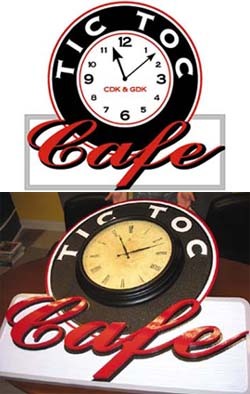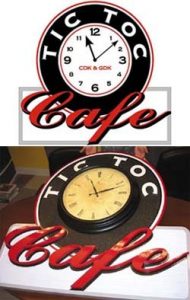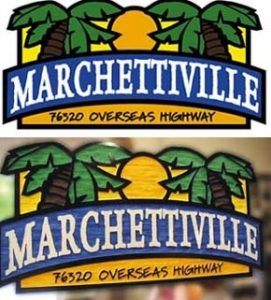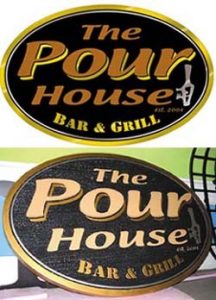Twelve years ago — as a way to continue working with his friends — Wade Parker formed Mouse Design Studio. For the first eight years, the company’s three-person crew conducted business from a 1,200-sq.-ft. facility. Today, the Roswell, GA-based design studio and fabrication facility occupies 5,000 sq. ft. and employs 12 full-time workers, five of whom are sign designers.
According to Robert Burnes, the company’s production and sales manager, Mouse Design Studio specializes in the design and fabrication of sandblasted and CNC-routed signs, and routed letters and logos. Apartment, church, community, entrance, residential, restaurant and storefront signs are featured in the company’s portfolio.
Adobe® Illustrator® is the company’s primary design tool; its equipment arsenal primarily comprises Roland and Cam Tech plotters, a diesel-driven compressor, and various saws and hand tools.
Burnes noted that the studio’s design process varies depending on a customer’s budget and expectations. Designing a sandblasted sign can be as simple as matching an existing building’s color scheme, or as complex as incorporating different effects to create a custom look.
However, in all cases, Mouse Design Studio will first create a rough sketch with content and then produce a layout from the original sketch.
Burnes noted, If customers supply their own design work, we either use it or offer suggestions based on the client’s business, visibility issues, and traffic flow and speed. If we start from scratch, we turn the job over to our design department, which works directly with clients to determine a sign’s initial design, as well as its color palette and shape.”
Customers must submit their own design files in vector format. Most graphic-design programs, including Illustrator, FreeHand®, CorelDraw®, SignLab™, FlexiSign™ and Inspire™, can export artwork as an Adobe Illustrator EPS (or AI) file. In addition, customers must type to curves, and zip (PC) or stuff (MAC) their files before sending.
To determine a color palette with maximum visibility, the company’s design team typically suggests incorporating contrasting colors. Some effective examples include: black, blue or red text against a white background, yellow or white against black, yellow against blue or red, and black against yellow.
Burnes recalled a recent sandblasting job. “The sign incorporated a maroon background and navy-blue text,” he explained. “You almost couldn’t read it. However, it’s what the customer wanted.”
Because small elements don’t typically hold a blast, a sandblasted sign’s logo and lettering should be as large as possible. Block fonts usually hold a blast better than serifs. Mouse Design Studio can successfully blast lines down to 1/16 in. Smaller details can be achieved via handcarving.
For most environments, ovals and rectangles are preferred sandblasted-sign shapes. However, they’re usually prohibited in historic districts. From experience, Burnes has learned that a historic district’s signage must feature scalloped corners or scroll work to coincide with the district’s preserved look and feel.
A primary challenge can be integrating a customer’s logo, or look, within a budgeted sign size — for example, 2 * 3 ft. If a client’s budget is somewhat flexible, Mouse Design Studio will recommend upgrading to a larger sign size. Otherwise, the firm will suggest a sign that incorporates a small, removable, hanging component.
According to Burnes, “The small, add-on piece is a great place to advertise contact numbers and website addresses. Plus, it’s more affordable than having to purchase an entire new sign when only contact information needs to be upgraded. All you have to do is unhook the component and replace it with a new one.”
For further information, contact Mouse Design Studio at (770) 518-0292; website: www.sandblasted.com.


 Tip Sheet1 week ago
Tip Sheet1 week ago
 Photo Gallery2 days ago
Photo Gallery2 days ago
 Ask Signs of the Times3 days ago
Ask Signs of the Times3 days ago
 Real Deal1 week ago
Real Deal1 week ago
 Benchmarks6 days ago
Benchmarks6 days ago
 Editor's Note2 weeks ago
Editor's Note2 weeks ago
 Women in Signs1 week ago
Women in Signs1 week ago
 Photo Gallery1 week ago
Photo Gallery1 week ago
















